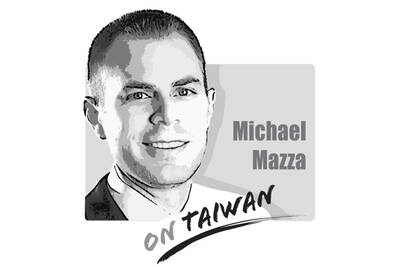In China, tasteless and colorless melamine has been part of the food chain for a long time. Its addition to Sanlu’s milk powder has now created a global panic over contaminated Chinese foodstuffs.
And this was not the first time.
In May last year, companies in China’s Jiangsu and Shandong provinces added melamine to wheat protein and barley protein powder, which caused thousands of pets in the US, Canada and other countries to fall ill or die.
More than 60 million pet food products were recalled. Feed for 20 million chickens, hundreds of thousands of cultivated fish and thousands of pigs was also contaminated with melamine.
The immediate reaction by the Chinese authorities to the allegations of poisonous animal food was strong denial, and it was only when the US insisted that it be involved and sent representatives to China to take samples that the scandal was exposed.
So what did the Chinese authorities learn from that incident? Nothing.
In the most recent crisis, local governments continued to offer denials even after New Zealand company Fonterra Co-operative Group used diplomatic channels to put pressure directly on the Chinese government. It is well-known within the Chinese industry that melamine is added to milk powder, vegetable proteins, processed food products and animal feed. The government knows it and tolerates it.
Melamine is one of many harmful additives, and even if the melamine problem were eliminated, other hazardous substances could be added to products.
On Wednesday, frozen green beans imported from China to Japan were found to contain 34,500 times the amount of pesticides allowed in Japan. The government immediately ordered a recall.
There is no end to all the problems with Chinese food products.
Importing countries must pressure China and demand that it meet its responsibilities by strengthening procedures to manage, inspect and ban contaminated food products and thus control the export of toxic food.
Taiwan’s Bureau of Standards, Metrology and Inspection and the Department of Health should meet their control responsibilities and implement stricter sampling of raw materials imported finished or semi-finished.
The government should amend the Commodity Labeling Act (商品標示法) to require that, in addition to listing manufacturing country, contents and nutritional value, labels also show the production process at the place of origin for raw materials to that consumers can make an informed choice as to the safety of a specific product.
Although China’s Taiwan Affairs Office spokesperson Yang Yi (楊毅) said China would handle the milk powder incident satisfactorily and demanded that Duqing Co in Shandong send representatives to Taiwan to investigate its export of dairy creamer here, he has kept mum on the issue of compensation to the victims, which displays a total lack of sincerity.
The milk powder scandal has had a serious economic impact on the companies involved as well as public health in Taiwan.
The Taiwanese government and private sectors must demand compensation from the Chinese government and manufacturers.
If China does not provide an adequate response to compensation demands in a timely manner, Chinese products should be boycotted and people should take to the streets to protest when Association for Relations Across the Taiwan Strait Chairman Chen Yunlin (陳雲林) visits Taipei.
The government and local industries breathed a sigh of relief after Shin Kong Life Insurance Co last week said it would relinquish surface rights for two plots in Taipei’s Beitou District (北投) to Nvidia Corp. The US chip-design giant’s plan to expand its local presence will be crucial for Taiwan to safeguard its core role in the global artificial intelligence (AI) ecosystem and to advance the nation’s AI development. The land in dispute is owned by the Taipei City Government, which in 2021 sold the rights to develop and use the two plots of land, codenamed T17 and T18, to the
Taiwan’s first case of African swine fever (ASF) was confirmed on Tuesday evening at a hog farm in Taichung’s Wuci District (梧棲), trigging nationwide emergency measures and stripping Taiwan of its status as the only Asian country free of classical swine fever, ASF and foot-and-mouth disease, a certification it received on May 29. The government on Wednesday set up a Central Emergency Operations Center in Taichung and instituted an immediate five-day ban on transporting and slaughtering hogs, and on feeding pigs kitchen waste. The ban was later extended to 15 days, to account for the incubation period of the virus

The ceasefire in the Middle East is a rare cause for celebration in that war-torn region. Hamas has released all of the living hostages it captured on Oct. 7, 2023, regular combat operations have ceased, and Israel has drawn closer to its Arab neighbors. Israel, with crucial support from the United States, has achieved all of this despite concerted efforts from the forces of darkness to prevent it. Hamas, of course, is a longtime client of Iran, which in turn is a client of China. Two years ago, when Hamas invaded Israel — killing 1,200, kidnapping 251, and brutalizing countless others
Art and cultural events are key for a city’s cultivation of soft power and international image, and how politicians engage with them often defines their success. Representative to Austria Liu Suan-yung’s (劉玄詠) conducting performance and Taichung Mayor Lu Shiow-yen’s (盧秀燕) show of drumming and the Tainan Jazz Festival demonstrate different outcomes when politics meet culture. While a thoughtful and professional engagement can heighten an event’s status and cultural value, indulging in political theater runs the risk of undermining trust and its reception. During a National Day reception celebration in Austria on Oct. 8, Liu, who was formerly director of the